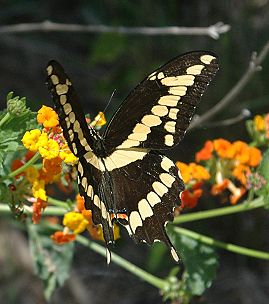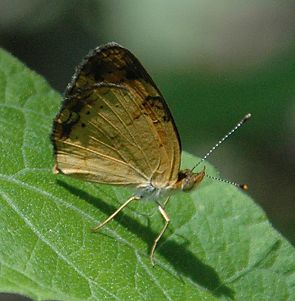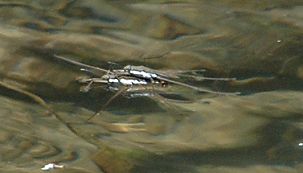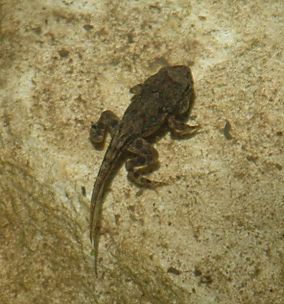
New Photos
May 28, 2006
 |
 |
| May and early June are the peak of the giant swallowtail
season. These butterflies lay eggs on citrus-family trees--on our place, that means prickly ash and
wafer ash (neither is an ash...). They nectar on a variety of large, bright-colored flowers. This
year, I found them on a pair of lantana bushes--one pink and pale yellow, and the other orange and
bright-yellow. It's hard to get a giant swallowtail all in focus--they keep fluttering vigorously
even while drinking nectar and they move quickly from flower to flower. This year, I am trying to photograph and identify our smaller butterflies. In the creek woods, in a sunny opening, I found two beauties this week. |
|
 |
 |
| This Silvery Checkerspot, Chlosyne nycteis, doesn't look silvery at all on top, though it's quite beautiful with the contrasting orange and yellow-orange pattern on black. | But underneath, the hindwing has an intricate pattern of silvery "bubbly" spots. Most of the time it perches with its wings closed, like this. |
 |
|
| Like the Silvery Checkerspot, the Pearl Crescent, Phyciodes tharos, most often perches with its wings closed. If the wings are tilted to the full sun, it looks yellower than this picture, with a dark rim. | |
 |
 |
| In full sun, with its wings spread, it's mostly golden-orange with delicate black markings and dark wingtips. | When a cloud comes over, or perched in shade, the orange is deeper and intense, showing up even without the sun on it. |
| So we have butterflies in the sun, but what's in the water, now that we have water in several places in the creek woods? | |
 |
|
| Water striders skim the surface of all the available water; here a pair in the south-end "swamp" are mating. | |
 |
 |
| Tadpoles showed up in Westbrook a couple of weeks ago, after the rains, and already some had four legs by late in this week. | The highlighted area shows a well-camouflaged infant crayfish, not even an inch long, whose front "claws" won't develop for several more moults. I also saw snails and dragonfly larvae in Westbrook, but with a strong wind rippling the surface, a slight current as well, and the dragonfly larve doing their best to hide from the giant eye of the lens...the pictures were far too blurry to post. |
 |
|
| A brown striped caterpillar has eaten the whole plant except for the flower, and it's working on that. No, I don't know what kind of caterpillar... | |
![]()

